- Popular Post

kscarbel
-
Posts
1,114 -
Joined
-
Last visited
-
Days Won
8
Content Type
Profiles
Forums
Gallery
Events
Blogs
BMT Wiki
Collections
Store
Posts posted by kscarbel
-
-
-
Sweet. Thanks. Scania's kicking but in the V8 market. 730HP I don't think eaton makes a clutch for that and then they run it through a single axle. Can't do that in the States.
Scania specs Sachs clutches.
Eaton does offer a global-style diaphragm clutch however its limited to 2500 N.m (1844 ft-lb) for engines under 500 horsepower (see attachment).
DC16 520hp 2700 N.m (1991 ft-lb)
DC16 580hp 2950 N.m (2176 ft-lb)
DC16 730hp 3500 N.m (2581 ft-lb)
-
Mack Trucks (err Volvo) showed off an LNG-powered Mack Pinnacle...........The tractor was built for UPS.........UPS has since placed an order for 122 additional units...........The tractor is equipped with a Cummins Westport ISX12 G engine.Apparently UPS didn't like the Volvo D13 LNG.
-
Fleet Owner / June 27, 2013
WASHINGTON, DC. Mack Trucks showed off a liquefied natural gas (LNG) powered Mack Pinnacle model here this week at the Alternative Clean Transportation (ACT) Expo.The displayed tractor was built for UPS and has been in test service in Greensboro, NC for the package delivery giant. The truck has been running two 350-400 mi. shifts per day, hauling loads of up to 80,000 lbs. hauling both single and double trailers. UPS has since placed an order for 122 additional units scheduled to be delivered throughout the fourth quarter of 2013.
The tractor is equipped with a Cummins Westport ISX12 G engine and offers maintenance-free aftertreatment meeting both EPA 2010 and CARB emissions standards. The powerplant offers 400 hp. and 1,450 lbs.-ft of torque.
“Because ACT Expo is North America’s largest alternative fuel and clean vehicle technology show, we felt it was an important venue to demonstrate the purposeful design that makes our Mack Pinnacle a leading natural gas-powered highway truck in the market,” said Roy Horton, Mack powertrain product marketing manager. “We have a long-standing relationship with UPS on the diesel side, and we take great pride in the fact that they’ve turned to us for natural gas vehicles as well.”
-
-
- Purpose-built custom aluminum-rail frame and carbon-fiber and fiberglass body panels. Curb weight: 10,200 pounds.
- 14.0-liter 825 horsepower Detroit Series 60 marine diesel modified by Gale Banks Engineering. Changes include an 8.3-liter supercharger, 110-mm turbocharger, methanol injection system to improve combustion and an intercooler spray system to reduce the intake temperatures. The modified engine delivers 2,400 horsepower and 5,000 pound-feet of torque using no.2 pump diesel fuel. The engine is governed at 2,700 rpm.
- Transmission is a 5-speed road racing automatic sending power to a permanently locked Detroit locker limited-slip differential.
- Steering rack from Howe Performance.
- Tires are custom-compound sticky racing rubber, molded by Michelin to resemble stock truck tires.
- 12-gallon diesel tank
- 14 gallon water/methanol tank
- 7 gallon water tank for intercooler spray
- 14 gallon water tank to fog the brake rotors for additional cooling.
http://www.autoblog.com/2013/06/27/freightliner-cascadia-pikes-peak-special-ride-along-w-video/
.
-
This amounts to former General Motors car guy CEO Troy Clarke hiring more of his out-of-work car guy buddies from General Motors. These are all the people that GM tossed when they ran tight on money (they kept the good people).
As Zenon Hansen might say, "Navistar needs to despense with these car people and get some others who know something about trucks".
___________________________________
When legendary former Mack Trucks CEO Zenon C.R. Hansen arrived in Allentown for the 1986 U.S. Savings Bond kickoff reception in the Hamilton Plaza Hotel, most curiosity surrounded Hansen's involvement with Mack rather than U.S. Savings Bonds. He was asked, flatly, if he was brought to Allentown as an adviser for Mack management.
"As a matter of fact, I'm back here for the American Truck Foundation directors meeting," Hansen said. "It's founded here in Allentown, and they contribute to Lehigh Valley charities and the American Truck Hall of Fame and the Truck Historical Society."
But Hansen wasn't afraid to openly discuss Mack's recent problems.
"All I know is that I had a very fine relationship when I was in Allentown with Mack employees. They were absolutely super, and also with the Mack union (United Auto Workers).
"I have a very concrete (truck) background to compare with - the directors who were running the company before I came (in 1965). We dispensed with those directors and got others who knew something about trucks.
-
Bloomberg / June 28, 2013
Navistar named a new finance chief as Chief Executive Officer Troy Clarke revamps his management team.
Walter Borst, 51, was named chief financial officer. He had been chief executive officer of General Motors Co.’s GM Asset Management unit. Clarke, who became CEO earlier this year, is also a former GM executive. Borst replaces Andrew Cederoth, whose departure was announced earlier this week.
Navistar is trying to end losses. The Lisle, Illinois-based truckmaker ousted Dan Ustian as CEO in August after an inquiry from regulators about its accounting and disclosures. Lewis Campbell, a former CEO of Textron Inc., took the helm as interim head of the company before yielding to Clarke.
-
the 2008 and newer mack cabs are like 6 inches longer than the the old ch cabs so did they have to update the tooling to make these newer cabs or is it the same tooling ? also i dont see a problem with the current mack cab . yes the original ch cab came out in 88 but its still a good cab compared to other trucks out there . ived sat in the paccar classic style cabs and the there tiny no room and a very old design but still very popular so i dont see a fuss about macks older cab design. look at the rd cab was in production from 65 to 05 .
Yes, Volvo modified the CH tooling to add the 6 inches. My point about the CH cab's 25 year age is, in order to remain competitive in the truck business (and ideally lead the industry), one typically replaces a cab by year 20. Let's face it, over a 20 year period, technology has significantly advanced, more innovative design themes have been introduced, and of course customer demands evolve. The CH tooling, albeit modified for +6, is in terrible condition. Mack Trucks would never have handled it this way.
We all love the CA49 R-model cab. But to mention it in year 2013, it's proportions would have to grow, wider and longer. And then there's weight. The R-model cab was designed to be of metal construction, and is not adaptable to lightweight composites.
Lightweight composites, an improved Maxi-Glas material, are the ideal solution. Impervious to rust and corrosion, composite materials are fire-proof while offering excellent sound and temperature insulatiive qualities.
-
On 6/27/2013 at 8:14 AM, mike69mackman said:
Seems to me Mack should've held on to Hayes .
John Curcio said, "In our industry, history has proven you must grow or perish. I can recall the names of over 50 companies who once made trucks. Today, there exist about 12 brand name trucks which survived and they are all basically controlled by six companies".
Mack Trucks sent hard charging ex-Marine John Curcio into Hayes to grow the company, and he did just that. Production rose from 50 units to 500 the first year, and had annual sales of US$20 million by 1973. Employee numbers rose from 80 to almost 500.
But, according to Paccar executive vice president Bill Gross who oversaw their purchase of Hayes, "I think they sold it because it made no money. In fact, I know that's why they sold it.....There was no profit in it whatsoever."
-
-
- Popular Post
- Popular Post
As Hayes diversified under Mack ownership, they went after new market segments, The lightweight set-forward front axle MD-250 west coast vocational chassis was a prime example of product aimed to compete with Kenworth.
Note the modern appearance. Tell me this 1972 MD-250 doesn't remind you of the Kenworth T800 introduced in 1986.
.
-
 1
1
-
 2
2
-
Is the chn or vision cab based off the ch cab...was it mayflower who builds them still?
The current cab is based on the CH cab. The original Maxi-Glas door shells which I preferred, shared with the MH Ultra-Liner, were replaced with cheaper steel doors.
The CH cab entered the scene in 1988, supplied by Sheller-Globe.
Connecting the dots to the current supplier CVG, Sheller-Globe purchased Motor Panels of the UK and then put the Norwalk Mack cab plant under its new Motor Panels division. Then that division was sold in 1989 to UK-based CH Industrials, which was sold in 1991 to UK-based Mayflower Vehicle Systems, which was sold in 2005 to CVG (Commercial Vehicle Group, which has acquired Bostrom and National seating).
So currently, CVG stamps and assembles the cabs under contract in a run-down plant in Kings Mountain, North Carolina, originally located there to supply the Winnsboro, South Carolina plant.
Volvo Group owns the worn-out last generation technology cab tooling (CVG just uses it) and refuses to invest in any refurbishment because the narrowed North American version of the new Volvo global cab platform is in the pipeline.
Every day, these 25 year old cabs are shipped 500 miles all the way from Kings Mountain to Macungie.
-
Fleet Owner / June 26, 2013
Truckload carrier USA Truck took delivery of its 5,000th Freightliner model last week in a special ceremony held at the company’s Van Buren, AK, headquarters.
The milestone truck is a Freightliner Cascadia 125-in. sleeper equipped with a Detroit DD15 TC engine. The truck features decals on the driver’s door that mark the milestone and commemorate the long-term relationship between the two companies with the words, “Strong Relationships Last a Lifetime.”
“Freightliner Trucks has a reputation for building a quality product that is reliable and performs well for both drivers and the technicians servicing the equipment,” said Burton Weis, vice president, human resources for USA Truck. “Our relationship with Freightliner spans more than 25 years and is a testament to our business’ understanding of each other’s needs.”
USA Truck first partnered with Freightliner Trucks in 1988 when it purchased its first model.
“Our 5,000th truck is one of several hundred vehicles that we will take possession of as we continue to modernize to maintain a young and efficient fleet,” said Weis.
“We are proud of our history with USA Truck, and look forward to continuing to provide them with leading-edge solutions. The 5,000th Freightliner is an important milestone for both companies, and we are pleased to celebrate this achievement,” said Chris Lampert, North Central region general manager for Freightliner Trucks.
The 5,000th truck will be driven by longtime USA Truck driver Eddie Wilson. Wilson, a 28-year USA Truck employee, is a Gold Member of the company’s President’s Million Mile Club with more than 3 million safe driving miles.
-
Fleet Owner / June 26, 2013
But Obama doesn't say what new, post-2018 limits will be.
WASHINGTON, DC. President Obama will take executive action to further reduce the greenhouse-gas (GHG) emissions produced by heavy trucks beyond the limits already set to come into effect by model year 2018.
Noting that his Administration had already set "the first-ever GHG emissions standards for heavy-duty trucks and buses and vans,” it would “in the coming months partner with truckmakers to do it again for the next generation of vehicles.”
Those GHG limits covered 2014-2018 model year heavy-duty trucks, buses, and vans. According to the Obama Administration, these existing rules will cut GHG emissions by some 270- million metric tons and reduce oil consumption by 530- million barrels.
The Presidents’ remark about further cutting heavy-truck emissions came yesterday during a wide-ranging address he made at Georgetown University. There, Obama laid out an ambitious climate-change policy agenda for the remainder of his second term. The speech also included a call for tightening emissions standards for coal-fired power plants and hints about the future of the highly controversial the Keystone XL oil pipeline.
According to the President’s Climate Change Action Plan—which will be driven by executive actions not requiring Congressional approval— the Administration will once again “in partnership with industry leaders and other key stakeholders” develop “post-2018 fuel economy standards for heavy-duty vehicles to further reduce fuel consumption through the application of advanced cost-effective technologies.”
The action plan says only that— it offers no details on how much of a further improvement in MPG will need to be wrung from heavy trucks.
However, some details emerged this morning when two government panelists here at the Alternative Clean Transportation Expo replied to questions about the heavy-duty standards in the action plan.
EPA’s Christopher Grundler, Director of the Office of Transportation and Air Quality, said that the policy was in its “very early days” but “[EPA] have begun some technical work in this area, but scope and schedule all to be determined.”
Grundler reminded the audience that the Administration had conferred with manufacturers for the first round (2014-18 model year) of heavy-duty GHG/MLP standards. He said that areas now under consideration “span the gamut from better engines to better transmissions to better aerodynamic designs to fuel-based strategies… All that is on the table for consideration as we begin this collaborative process.
“We Intend to follow same successful way we did this last time,” he continued, “which is to engage the interested stakeholders early to keep them involved throughout the process and to listen to their concerns as well as the opportunities they see for developing cost effective proposals.”
Asked about whether measurement standards would change in future, Grundler responded that “I don't expect the metric to change from the ton-mile basis.”
He pointed out as well that there is work still to be done on trailers under the first round of standards. “We did make a commitment as part of the first round to look at trailers and we will,” he stated. However, he did not elaborate as to whether such trailer- related standards would come before the 2018 timeframe set for the new, second round of GHG/MPG rules.
Grundler also advised that the next round of heavy-duty standards would “take advantage” of work done for the Dept.of Energy’ s Super Truck research project.
Also on the panel was Daniel Utech, Deputy Director of the White House Office of Energy and Climate Change Policy. While Utech said he couldn't speak to the future standards specifically, he allowed that the "Administration remains committed to funding R&D in this space... We're committed here."
Reaction to the President’s heavy truck initiative from the American Trucking Assns. (ATA) was extremely positive. “We were enthusiastic supporters of the most recent round of standards for heavy-duty vehicles and we look forward to working with the Administration with the goal of setting economically achievable economy standards based on sound scientific research,” said ATA spokesperson Sean McNally.
Also upbeat was Navistar. “Fuel efficiency is a priority for Navistar and our customers and we continue to be actively engaged in providing solutions for improved fuel efficiency and reduced greenhouse gas emissions,” manager of external communications Elissa Koc Maurer told FleetOwner. “We look forward to working with the Environmental Protection Agency on this next phase.”
Sean Waters, director of compliance & regulatory affairs for Daimler Trucks North America (DTNA), manufacturer of Freightliner and Western Star Trucks as well as Detroit engines and transmissions, told FleetOwner the OEM “applauds efforts to reduce carbon emissions as evidenced by our leadership and looks forward to improving fuel economy and reducing carbon emissions without sacrificing future vehicle performance.
“In February 2012, EPA certified DTNA’s complete portfolio of model year 2013 on-highway, vocational and medium-duty vehicles as fully compliant with the new GHG14 regulations,” he continued. “DTNA’s commitment to green technologies is part of parent company Daimler AG’s global ‘Shaping Future Transportation’ initiative.” Waters said that initiative, launched in 2007, is “focused on reducing criteria pollutants, carbon dioxide and fuel consumption through the utilization of clean, efficient drive systems and alternative fuels.”
“DTNA is focused on providing our customers with sustainable options that exceed performance expectations at every turn,” added David Hames, DTNA’s gm of marketing and strategy.
Also enthusiastic was Volvo Trucks, especially regarding the new GHG rules being developed in a collaborative public-private manner, as happened with the first set.
“Environmental care has long been a Volvo core value, so we support the Administration’s ongoing focus on reducing greenhouse gas emissions,” Susan Alt, senior vp of public affairs for Volvo Group told FleetOwner. “We appreciate that the Administration is again taking a collaborative approach and seeking the industry’s input for this latest round of heavy-duty vehicle standards. We look forward to working together to develop environmentally beneficial standards that also take into consideration the associated economic and operational challenges.
“Volvo was the first heavy truck manufacturer to meet EPA 2010 emissions regulations and our full product lineup was awarded certificates of conformance by EPA and NHTSA under the first-ever greenhouse-gas regulations for heavy trucks,” Alt added.
-
This PDF on E9 injector service should answer most of your questions about nozzle holder removal. Note that you need Kent-Moore nozzle removal tool J37093.
-
 1
1
-
-
- Popular Post
- Popular Post
-
- Popular Post
- Popular Post
-
-
The clipper 100 looks better than the Mack version, looks more rugged is what I wanted to say. Did they use their own frame, or was that Mack also?
I forget if Brockway used their own frame with the 400 series, but I believe the Clipper 100 COE used F-model frame rails, drilled by Hayes to their needs.
The early F-model frame spec was 9 x 3-1/4 x 1/4 (Which UPS continued to use to the end)
Hayes was similar at 9-1/8 x 3-1/4 x 5/16.
-
-
-
Yes they were based in Jakarta.. different island..
And to think everything changed overnight is un realistic
When did Mack Production move from the Richlands Factory to the Wacol Factory?
When was the 1st changes in dealership support or change to company or private dealers and importors in Aust / Asia
When was the 1st design changes impacted on Mack Product?
I know that the legacy product was not touched design wise - only the new breed had design collaboration...
All the global truckmakers in Indonesia (and the main distributors) continue to headquarter in Jakarta (as former Mack Trucks distributor P.T. Allbest did), what with it being the capital of Indonesia. Volvo Trucks Indonesia is there, as is the head office of Volvo's principal truck distributor, PT Indotruck.
When did Mack Production move from the Richlands Factory to the Wacol Factory?
Australian Mack-brand truck production was moved out of the former Mack Trucks Australia Richlands plant and into Volvo Group's Wacol plant in 2002, just two years after Volvo Group acquired Mack Trucks.
When was the 1st changes in dealership support or change to company or private dealers and importers in Aust/Asia?
Well, Volvo starting gutting Mack Trucks right from 2000 in the U.S., and immediately lecturing dealers about the "Volvo Way".
As for dealers in Asia, according to the global Mack dealer locator, there no longer are any Mack dealers in northeast and southeast Asia. It indicates that only Australia and New Zealand in Oceania have Mack brand representation now.
The New Breed has a Volvo chassis. That's not collaboration, rather, that marked the beginning of Mack-branded Volvos in Australia. Thus it was terribly convenient to move Mack brand production into the Volvo plant.
-
- Popular Post
- Popular Post
In 1969, Mack Trucks purchased a sixty percent stake in Vancouver, British Columbia-based Canadian truckmaker Hayes Manufacturing.
Founded in 1922 as Hayes-Anderson Motor Co.Ltd. and renamed Hayes Manufacturing Co. Ltd. in 1928, Hayes was the oldest and largest Canadian manufacturer of heavy trucks at the time of the Mack purchase.
In 1971, the corporate name was changed to Hayes Trucks, Ltd. and the Clipper 100 COE was introduced.
Hayes had produced on-highway and fire trucks, rail cars and off-highway trucks for the logging industry including the HDX and W-HDX (http://www.bigmacktrucks.com/index.php?/topic/30466-when-mack-roamed-europe-the-middle-east-africa-and-western-asia/page-2).
After joining Mack Trucks in 1967, Jack Curcio was appointed by Zenon Hansen as president and managing director of Hayes. Under Curcio, Hayes production rose from 50 units to 500 the first year, and had annual sales of US$20 million by 1973. Employee numbers rose from 80 to almost 500.
Under Mack Trucks, Hayes was given a considerable degree of autonomy. Upon request, technology was provided as in the case of the F-model cab for the Clipper 100 COE.
Mack Trucks allowed Hayes to broaden its product range, grow its sales network across Canada and establish Hayes dealers in the Western United States (including Alaska and Hawaii), and world markets
Commenting on Hayes’ expansion, President Jack Curcio said the plant expansion and new truck production line reduced the vulnerability of the company which was dependent primarily on one industry and one marketing area, logging in B.C. and Alberta.
Curcio’s key objectives for Hayes were:
- Maintain a leadership position in custom-built heavy-duty logging truck and oil field rig segments in British Columbia and Alberta.
- Enlarge the distributor organization across Canada to provide a more diversified market base for existing Hayes products.
- Establish of a strong distributor organization in the Western United States.
- Create a worldwide distribution network for Hayes trucks.
- Develop a more competitive and diverse line-up of on-highway heavy trucks.
The Hayes Clipper 100 COE, one result of Curcio's expansion strategy, began rolling off the assembly line in January 1971. The new production line for Hayes heavy trucks was formally inaugurated on February 16, 1971 and attended by Canada’s Federal Minister of Labor Bryce Mackasey and Zenon C.R. Hansen, Chairman of the Board and President of Mack Trucks, Inc. and Chairman of the Board of Hayes Manufacturing Company.
Mackasey complimented Hayes on the emphasis it puts on people and that they "let people identify with what's happening in the company." He said the association of Mack Trucks with Hayes was an ideal type of arrangement where the U.S. contributed the capital and technology, while there was no lessening of Canadian content
Zenon C.R. Hansen said "the establishment of the (new) Hayes production line and the progress made by Hayes makes us proud that we have allowed you to continue to be Hayes, as you were. Hayes is a Canadian organization, and will carry on as a Canadian company."
Hayes received its largest single order in 1971 for twenty-six identical 100-ton logging trucks and fifty 100-ton pup trailers, all to operate over the rugged terrain in the Kemano area of Northwest British Columbia hauling approximately 200 tons of logs per trip.
Hayes also produced a complete line of logging trailers from 20 tons up to 60 tons.
Assisting Curcio in the company’s expansion were British Columbia natives:
George Gray, vice president - sales
Tom Everett, vice president – operations
Brian Watts, controller-secretary treasurer
Frank Dean, manager of engineering & product development
Kyle Gardiner, chief engineer
Hayes planned to make Vancouver "The Truck Capital of Canada"
In 1974, Mack Trucks sold Hayes to the Gearmatic Co. Ltd., a subsidiary of Paccar, ahead of a worldwide recession. Hayes had been a principle competitor of the Canadian Kenworth Company (a subsidiary of Paccar of Canada Ltd.).
During the short period that Paccar operated Hayes, the Clipper COE utilized the Peterbilt 352 “Pacemaker” cab. With the recession certainly being a factor, Paccar closed Hayes on September 30, 1975.
.
-
 2
2
-
 7
7


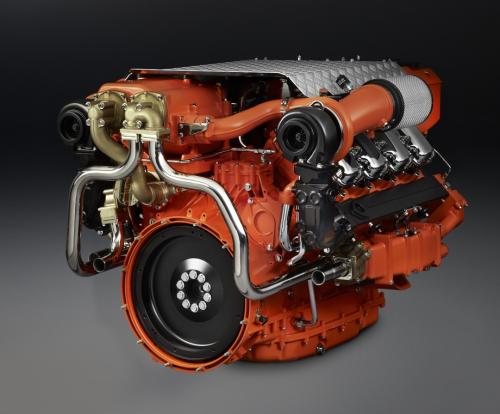
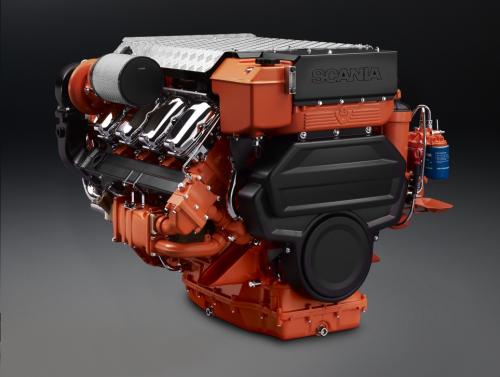
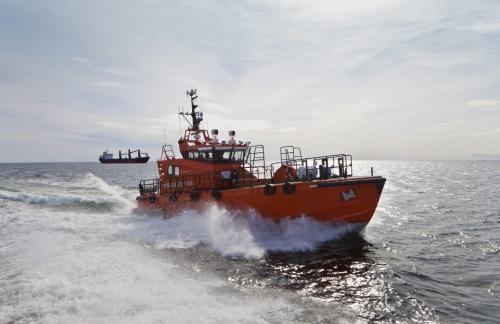
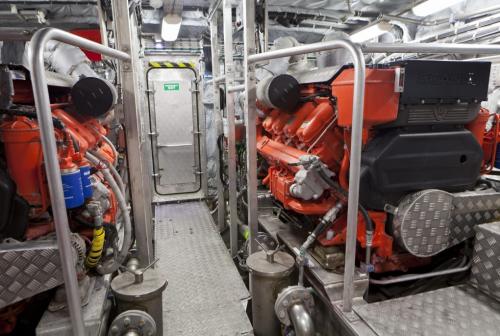
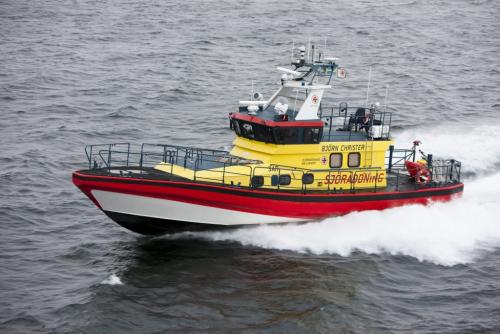
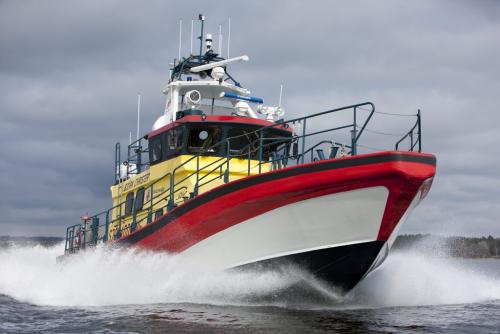
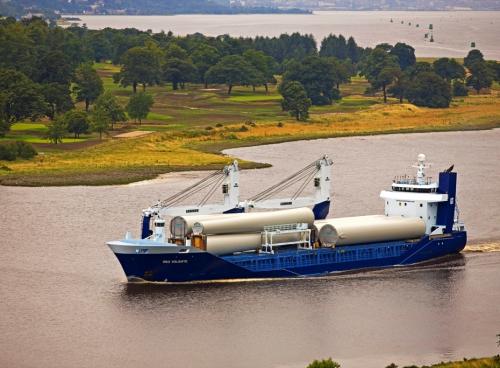
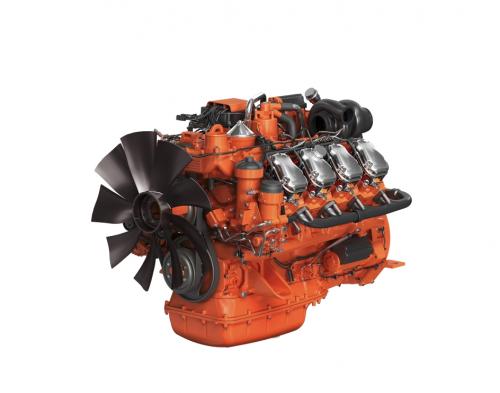
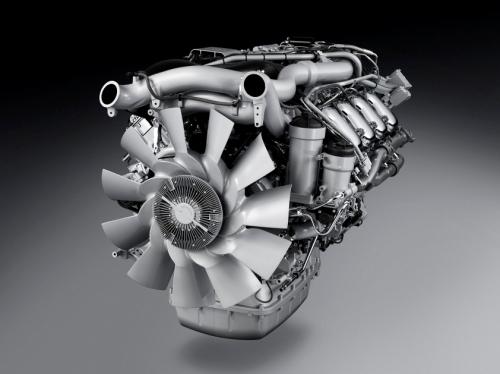
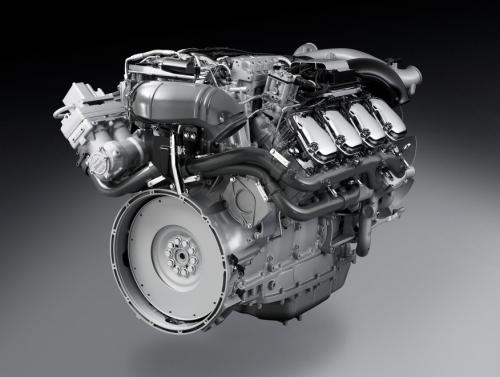
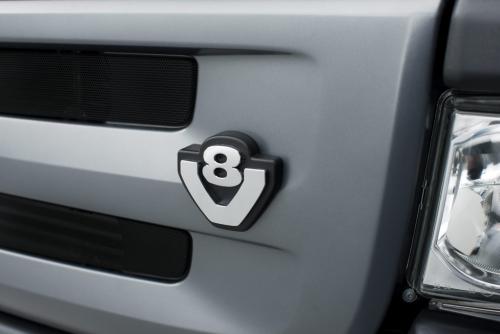
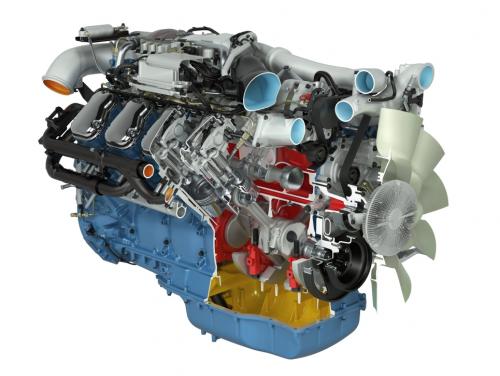
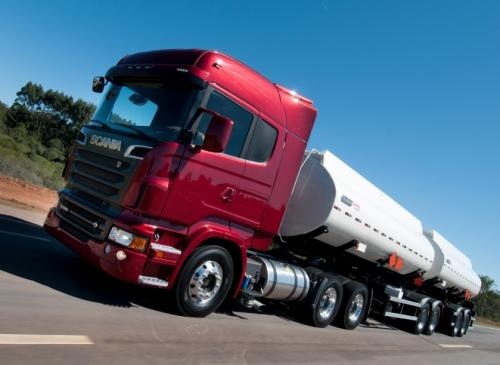
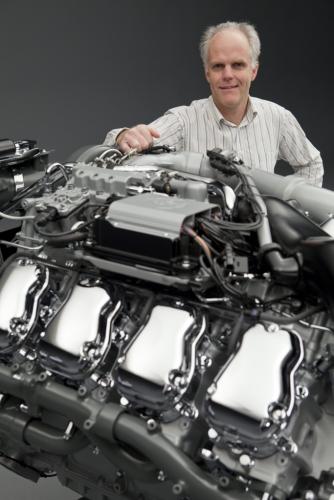
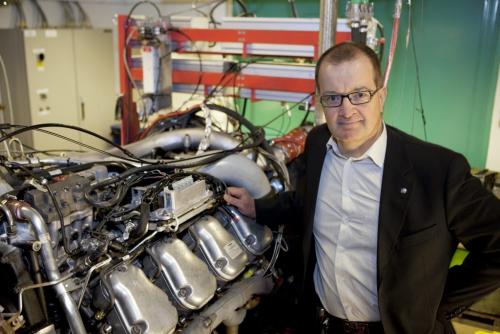
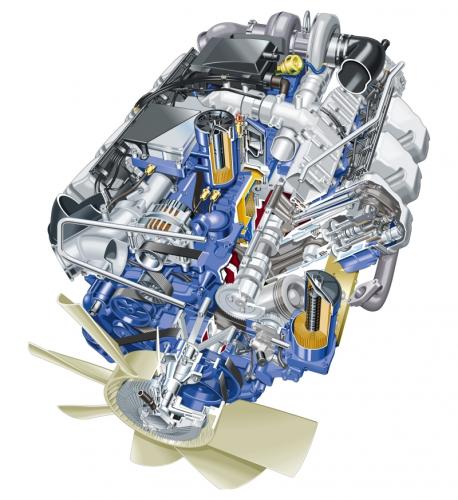
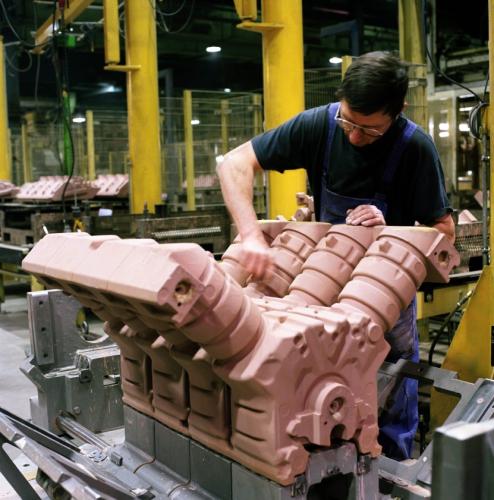
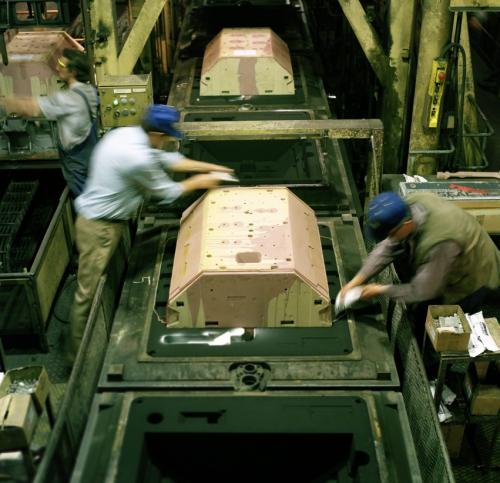
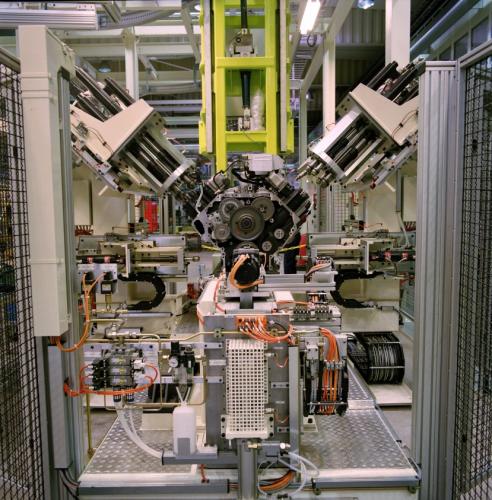
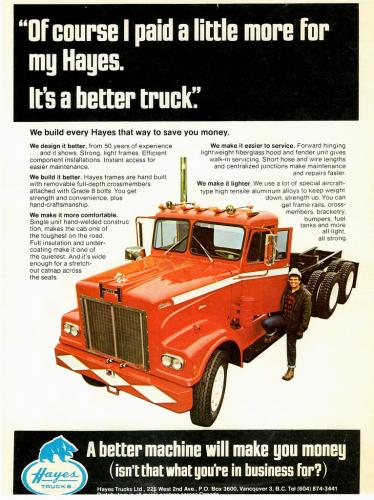
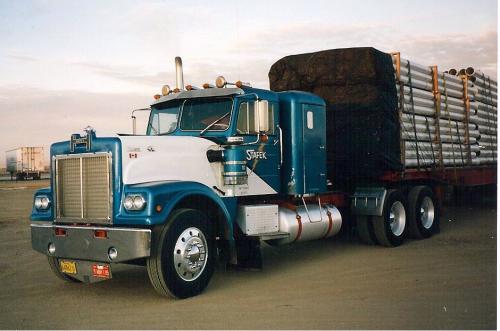
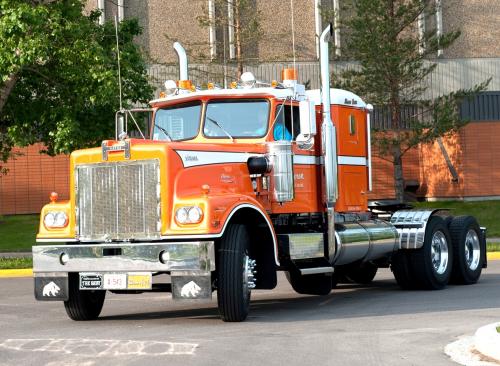
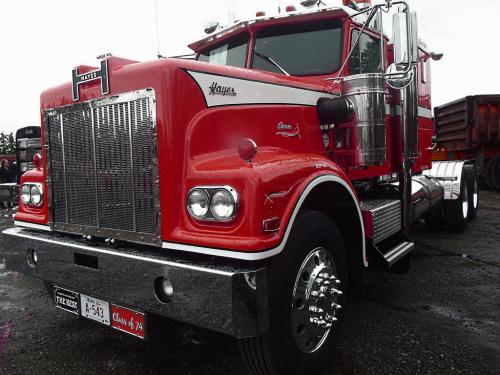
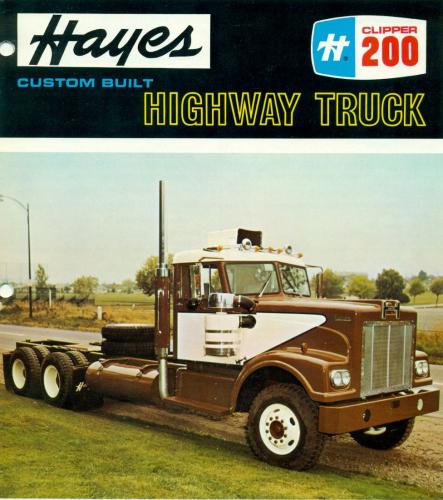
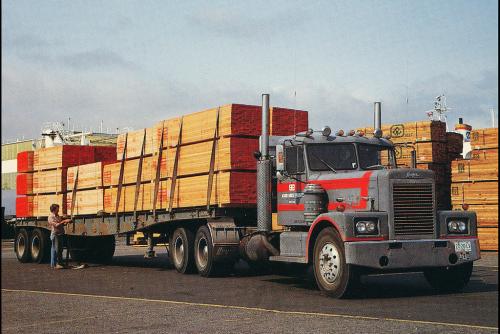
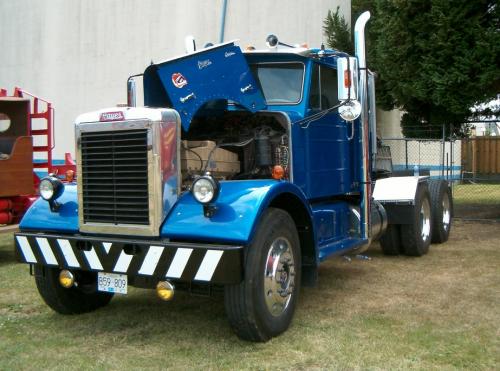
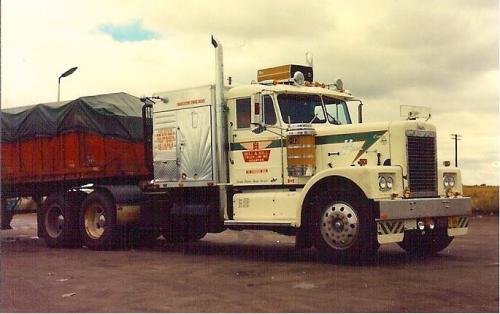
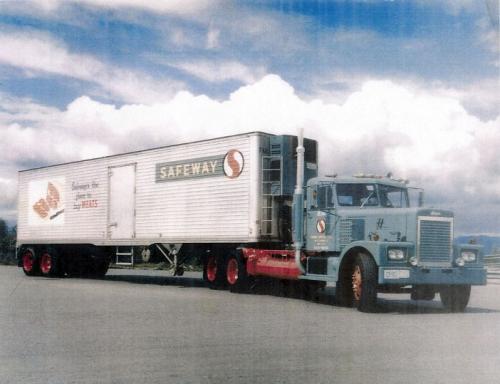
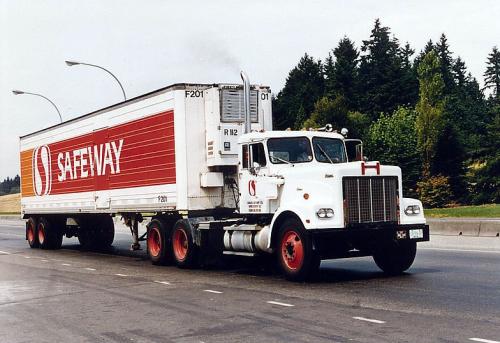
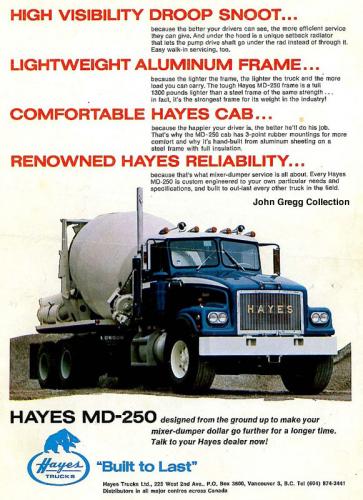
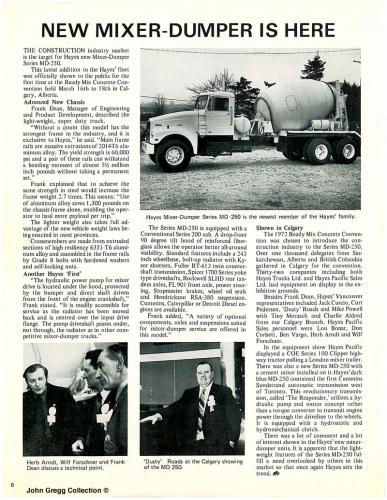
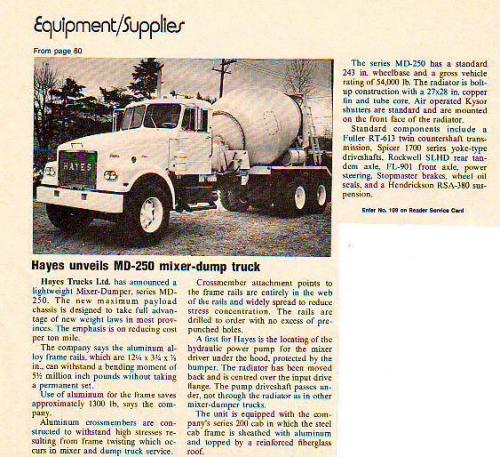
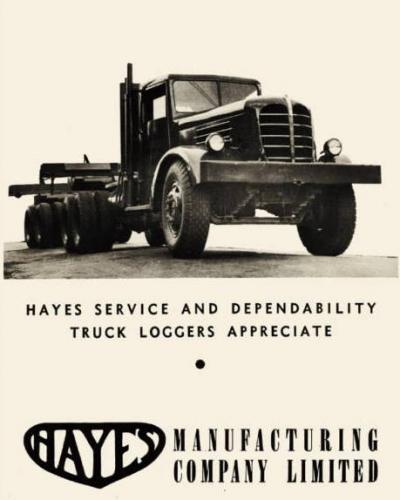
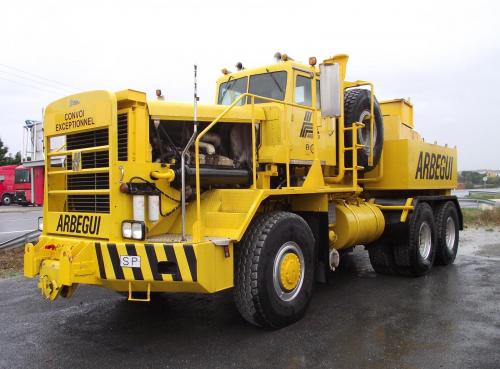
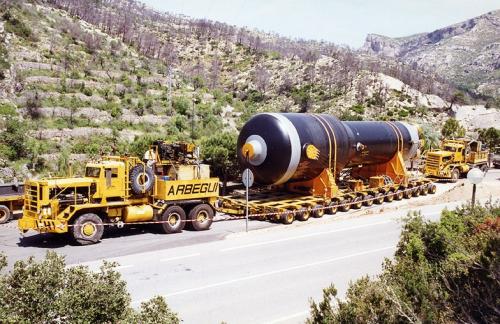
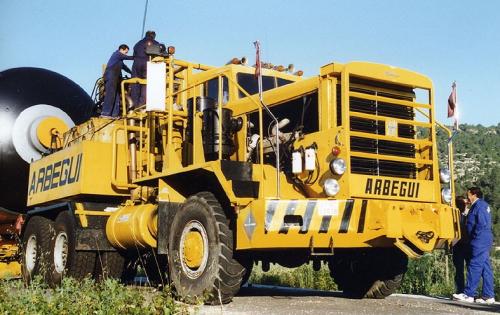
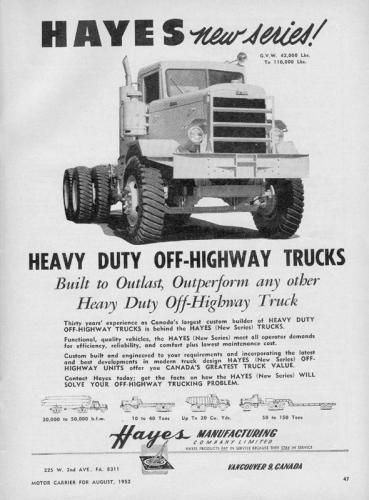
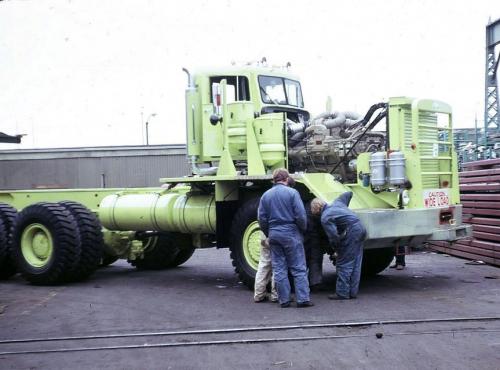
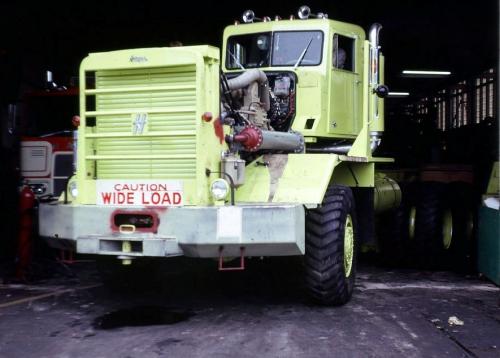
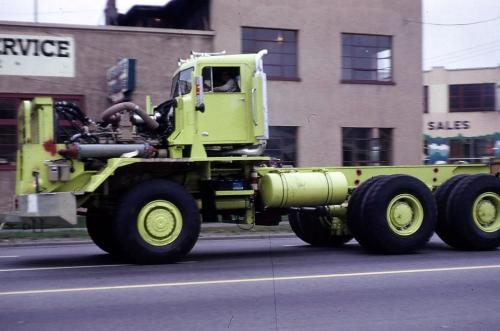
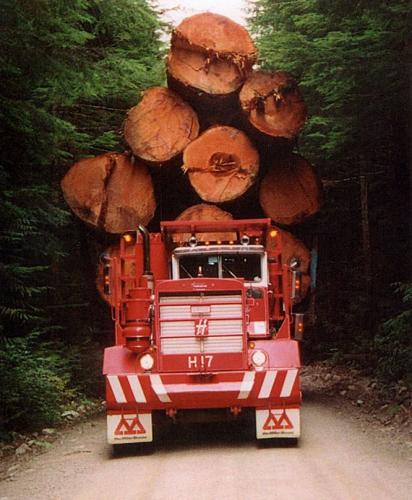
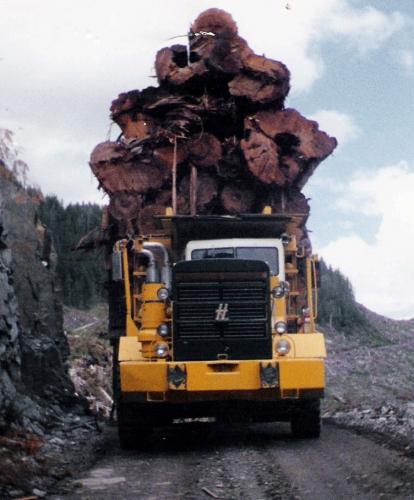
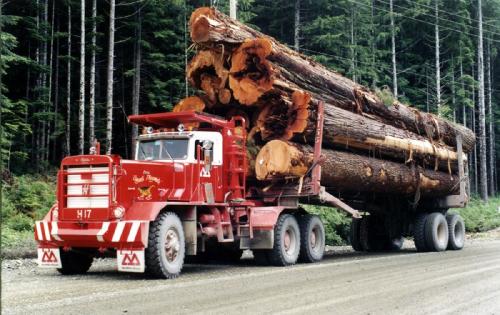
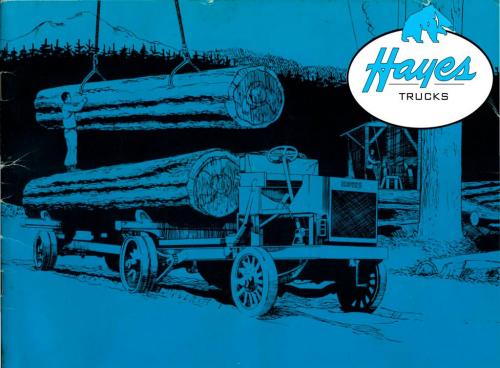
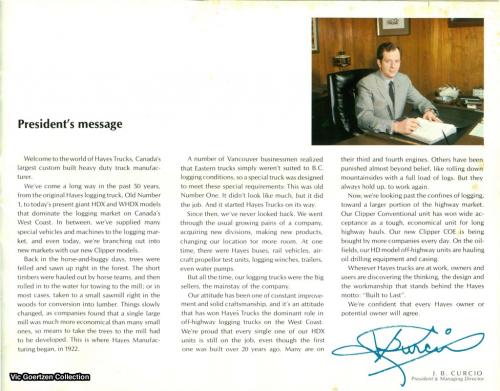
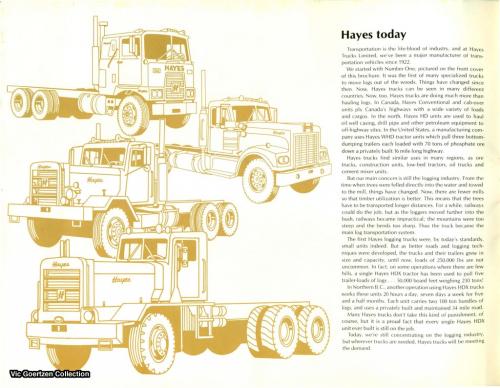
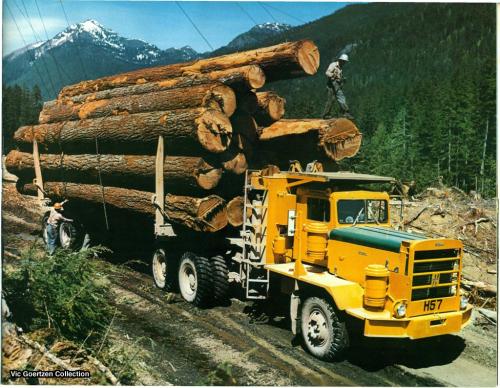
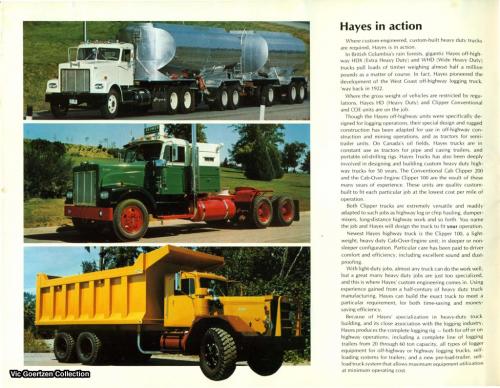
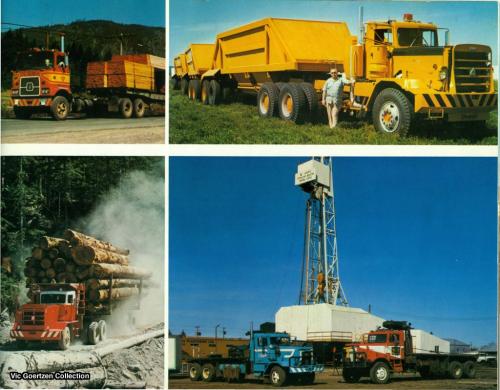
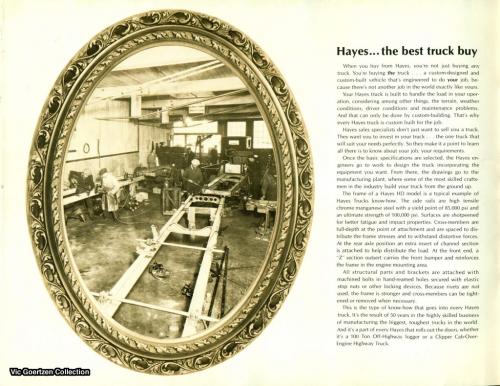
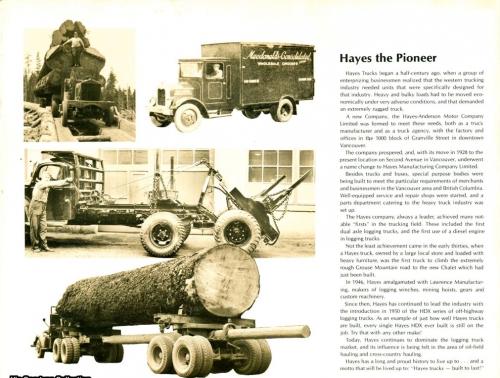
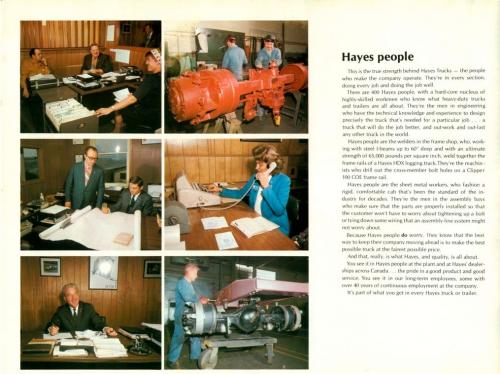
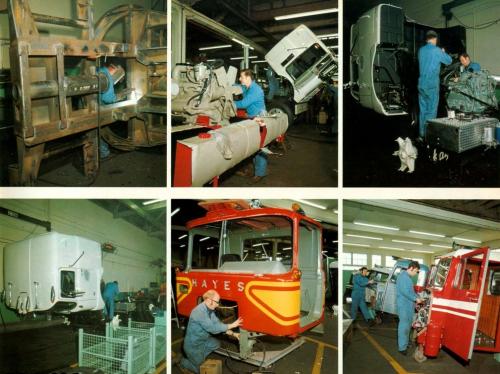
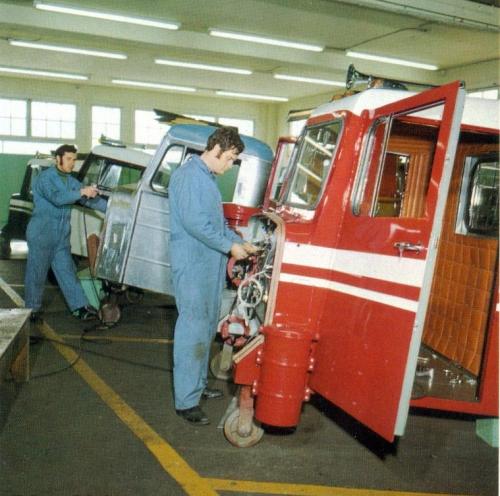
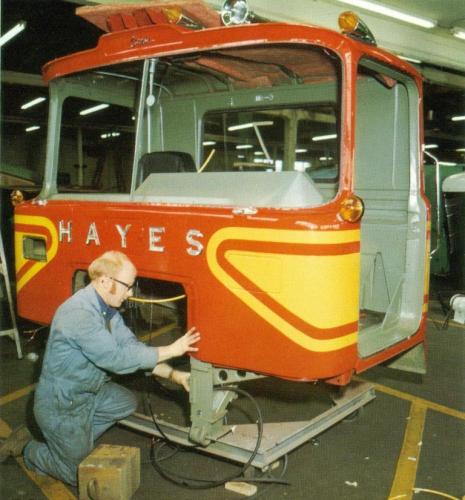
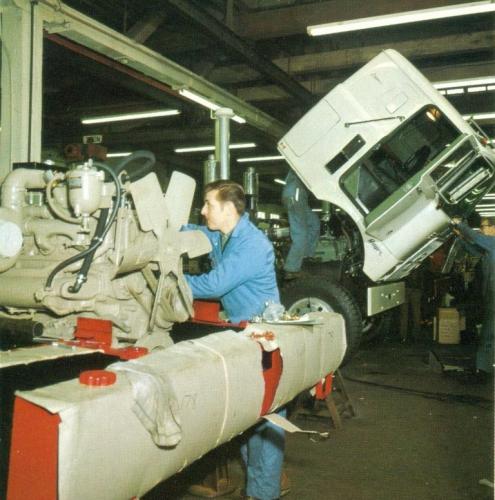
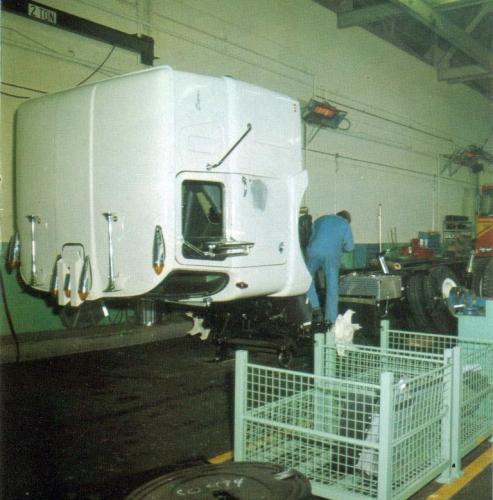
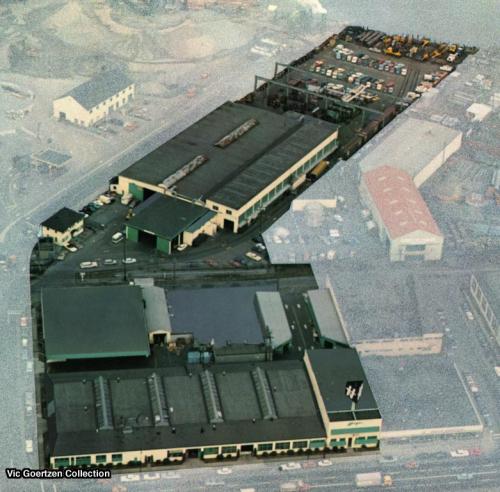
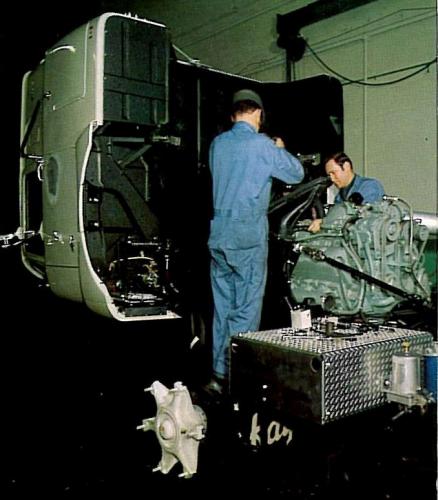
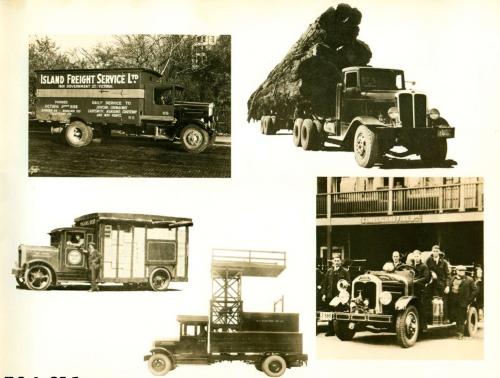
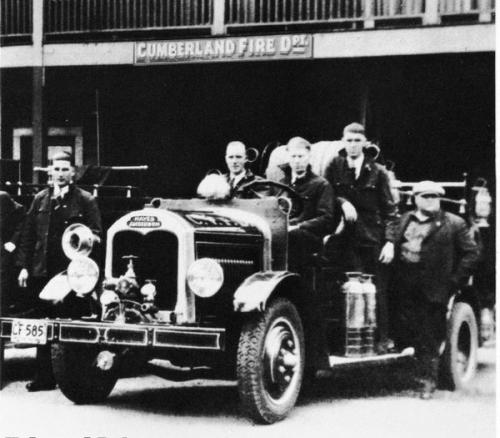
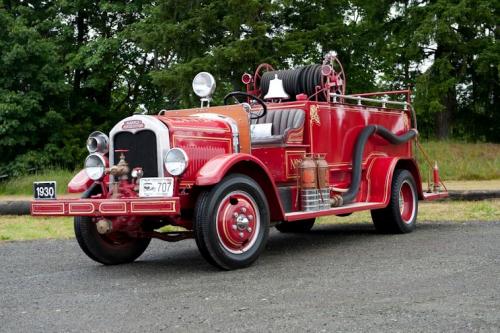
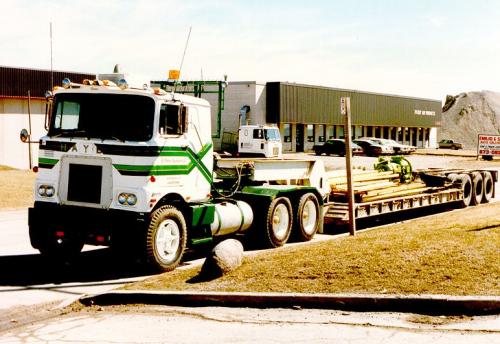
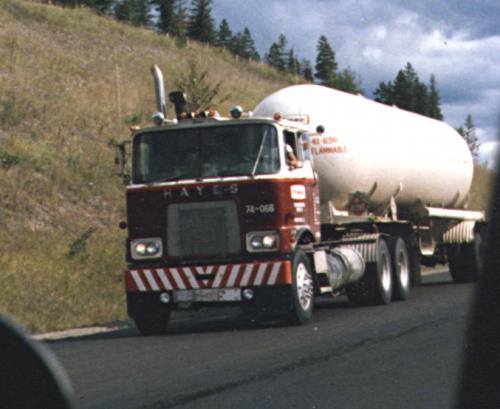
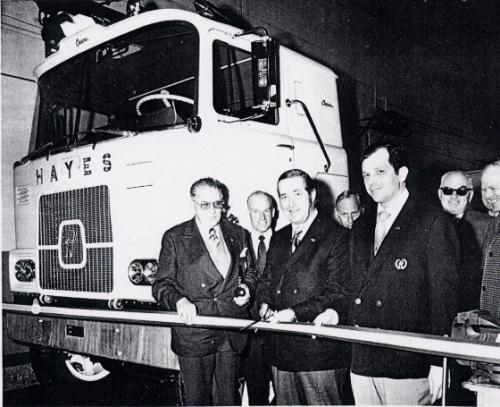
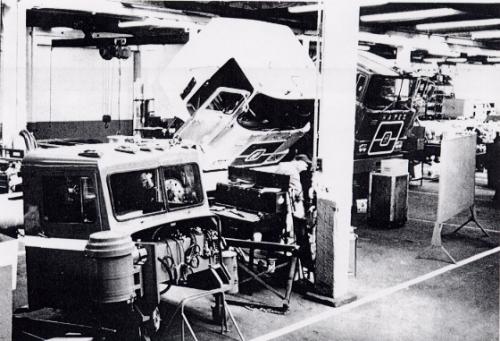
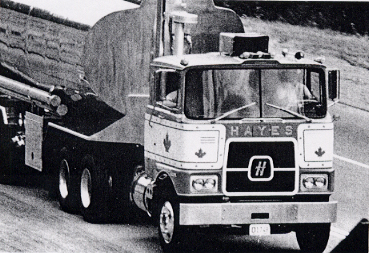
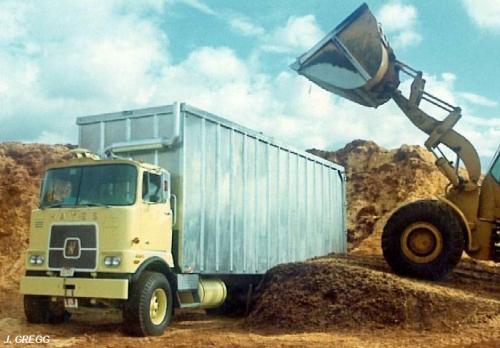
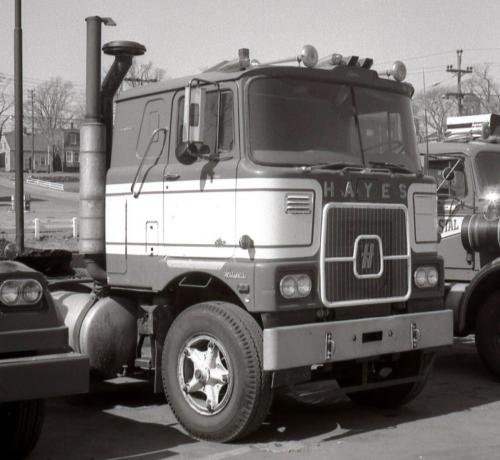
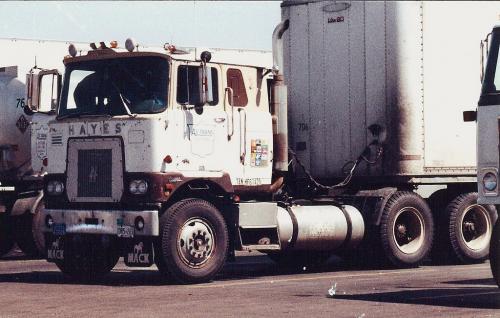
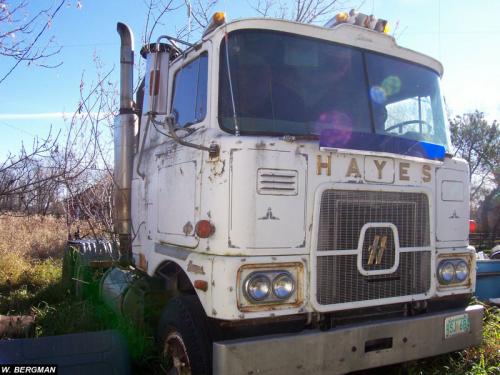
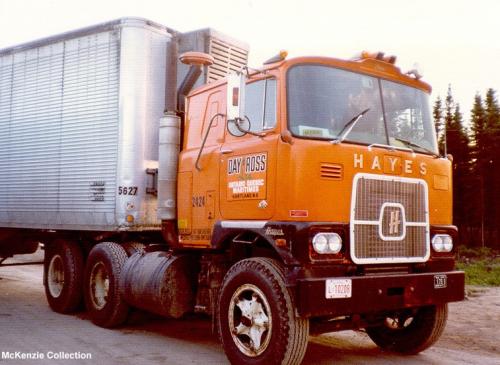
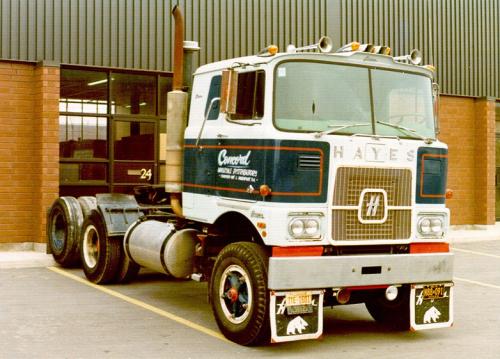
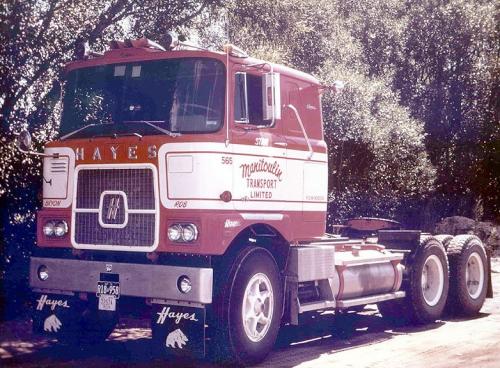
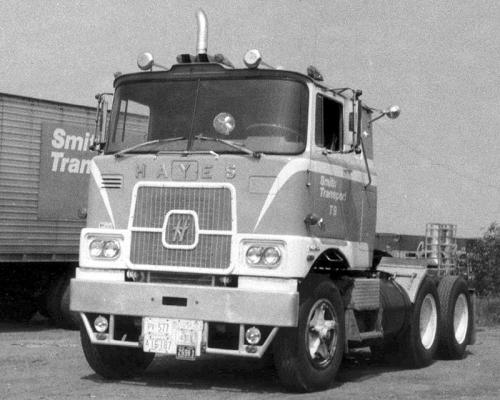
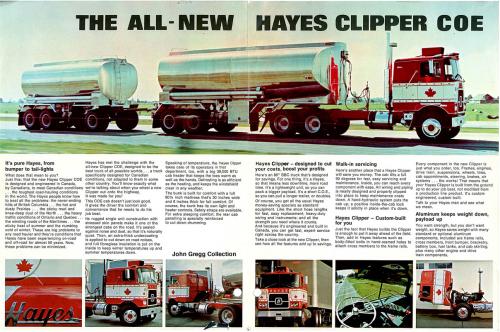
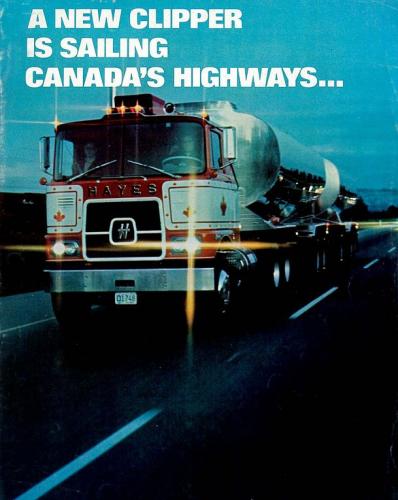
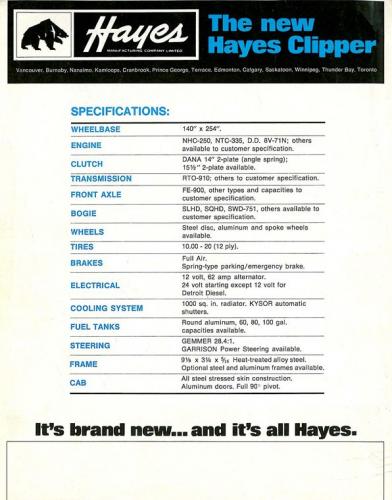
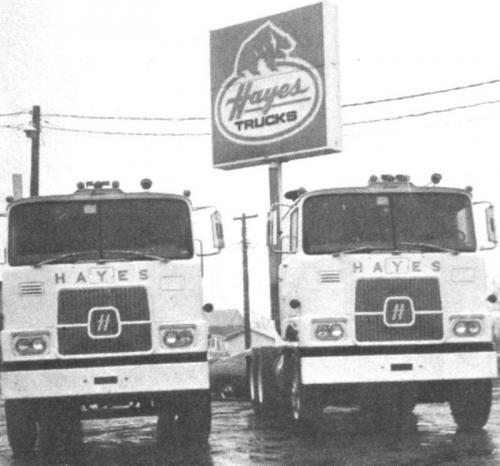

Those Hayes Clipper 100 COEs
in Other Truck Makes
Posted
Yes he was. Although I didn't always agree with them, ex-marines in the auto and truck industry like John Curcio and Bob Lutz have always had my respect.
Here are some Hayes HDs.
The Hayes model nomenclature for their vocational range was straightforward:
.